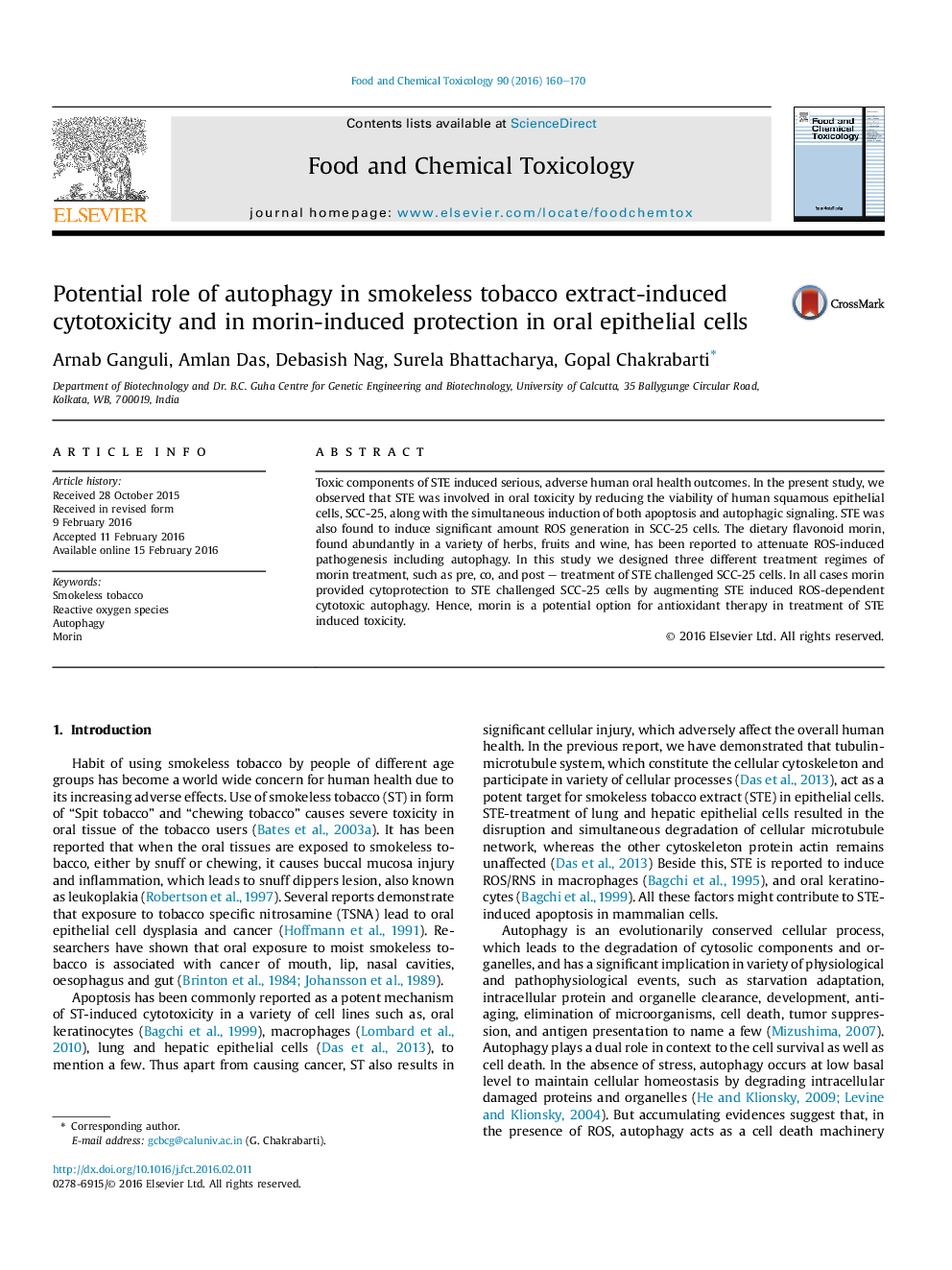| Article ID | Journal | Published Year | Pages | File Type |
|---|---|---|---|---|
| 2584863 | Food and Chemical Toxicology | 2016 | 11 Pages |
•STE induced ROS dependent autophagy in oral SCC25 cell line.•Autophagy and apoptosis both act as cell death mechanism in STE treated SCC25 cell line.•Antioxidant morin reduced ROS level, and inhibited apoptosis and autophagy, hence protects STE induced oral cytotoxicity.
Toxic components of STE induced serious, adverse human oral health outcomes. In the present study, we observed that STE was involved in oral toxicity by reducing the viability of human squamous epithelial cells, SCC-25, along with the simultaneous induction of both apoptosis and autophagic signaling. STE was also found to induce significant amount ROS generation in SCC-25 cells. The dietary flavonoid morin, found abundantly in a variety of herbs, fruits and wine, has been reported to attenuate ROS-induced pathogenesis including autophagy. In this study we designed three different treatment regimes of morin treatment, such as pre, co, and post – treatment of STE challenged SCC-25 cells. In all cases morin provided cytoprotection to STE challenged SCC-25 cells by augmenting STE induced ROS-dependent cytotoxic autophagy. Hence, morin is a potential option for antioxidant therapy in treatment of STE induced toxicity.
Graphical abstractFigure optionsDownload full-size imageDownload as PowerPoint slide
